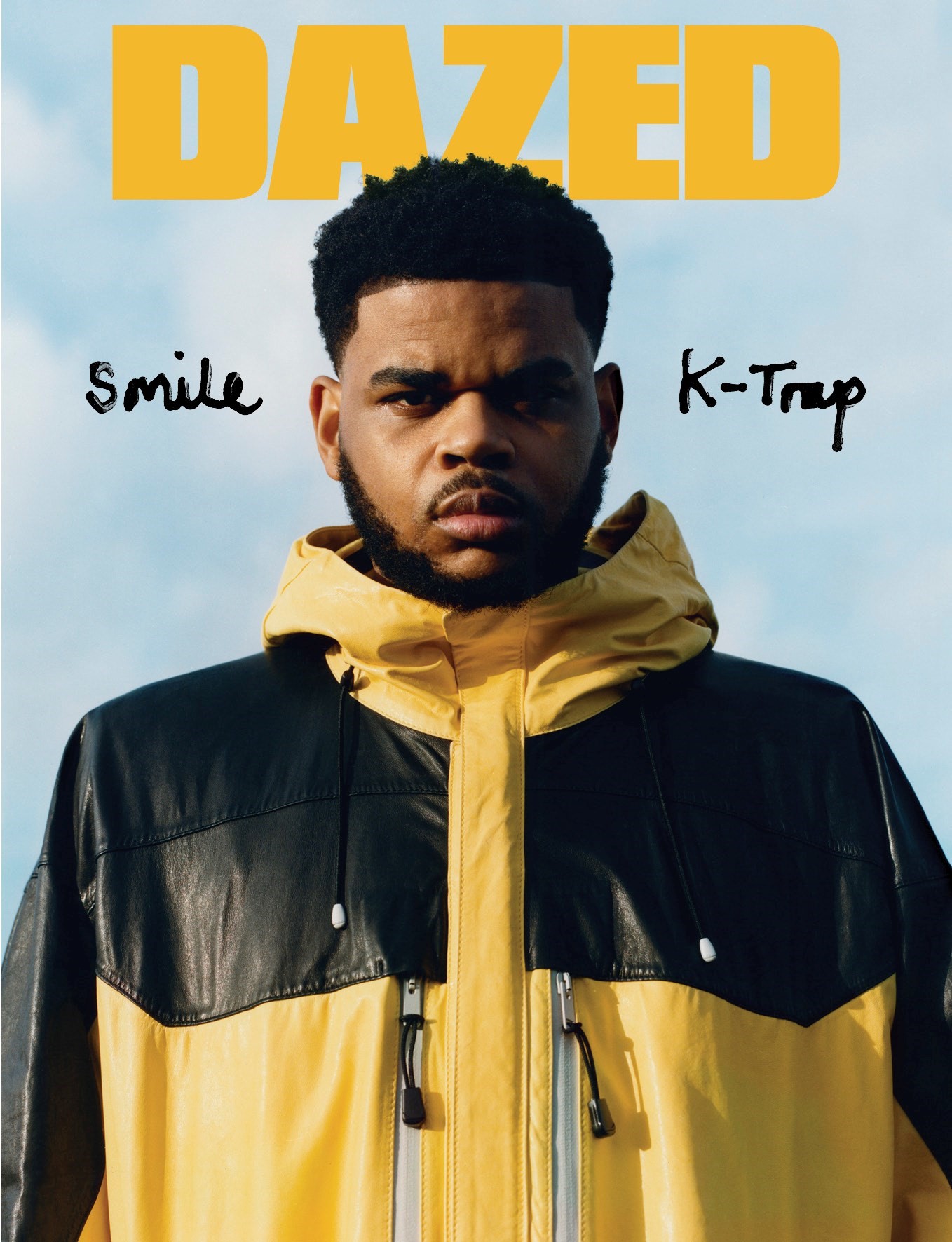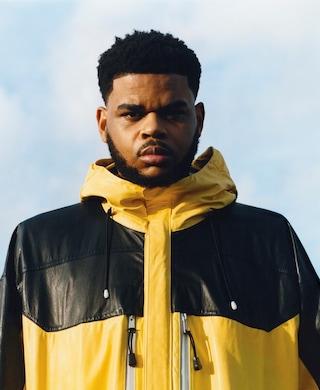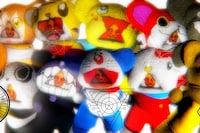This story is taken from the spring 2024 issue of Dazed. Pre-order a copy of the magazine here.
Nowadays, you’re likely to find K-Trap in the ring. Not necessarily out of some grand aspiration to moonlight as a champion boxer, but out of an appreciation for the sport’s physical demands. To stick to a routine, to be nimble and light on your feet, but hardened enough to take a punch or two. At his first sparring session, it took all of 10 seconds for him to get knocked squarely in the face, and it wasn’t until he felt drops of liquid on his cheek that he realised the blow had triggered a nosebleed. “I thought once I got hit on the nose they were going to stop,” he remembers, but his partner continued with his gloves up. A coach took a tissue to the bridge of his nose and squeezed hard, he stresses, and told him to carry on.
“I’m not really scared of a nosebleed any more,” he concludes, with a casual nonchalance. It’s a philosophy that you could say the artist has brought to his career: to continue sparring even when the blood starts gushing. His rapid ascent to the top of the drill scene has come with its share of adversity, and yet here he is, still in the ring with a Top 5 charting album (last year’s Strength to Strength, with Headie One) and 1.5 million Spotify listeners to his name. Throughout, he has been a shapeshifter, an enigma cycling through identities and determining what elements of himself to reveal.
Even so, K-Trap has always been forthcoming about what he does share, and every project since his debut mixtape, The Last Whip, has evoked visceral images of his life in south London. On “Paper Plans”, he was trapped by encroaching authorities, recalling when he “was sitting on the dock, two hands on my lap”. He lamented the “gift and curse” of life on “Street Side Effects”, but left space for dark humour too, as in breakout hit “Warm”, where he asserted that “the only time I step out naked is when I’m fresh out the en-suite”. “I don’t want to do fairytales or paint a picture that’s not really going on in my life or in the real world,” says the rapper. His latest album, Smile?, depicts an altogether new K-Trap, one who is open and liberated, but wrestling with what it means to be your authentic self when you have left home behind.
We meet up in the brightly lit restaurant of a Soho hotel, and slot ourselves into the far corner where our conversation seems to reverberate around the high, ornate ceilings. It’s a regular haunt for the musician on account of the fact that it’s lunchtime and completely barren: a rare place of serenity in central London. New year has just passed, and K-Trap is hopeful. “I definitely feel like this year is going to be my best year yet,” he says. “I’m excited to become the person I’m trying to be.” That person is laid bare in Smile?, K-Trap’s most vulnerable album yet. Over its nine tracks, he reflects on his journey, from putting “rum in a 99 flake” to “sitting front row with Skepta”, relishing in his upward trajectory and how precarious it all could be. The album places him at a crossroads.
On “Grown Decisions”, he muses about settling down in Surrey and wonders if the move is a betrayal of his roots. “Out in the suburbs / If I tell the truth I ain’t missing south / Then again I’m lying, that’s where the music’s inspired,” he raps, tossing and turning, wondering whether his new life of comfort is genuine growth or an elusive fantasy. “It’s bittersweet,” he says. “I can never forget where I’ve come from but I also know that I’m bigger than my old life.”
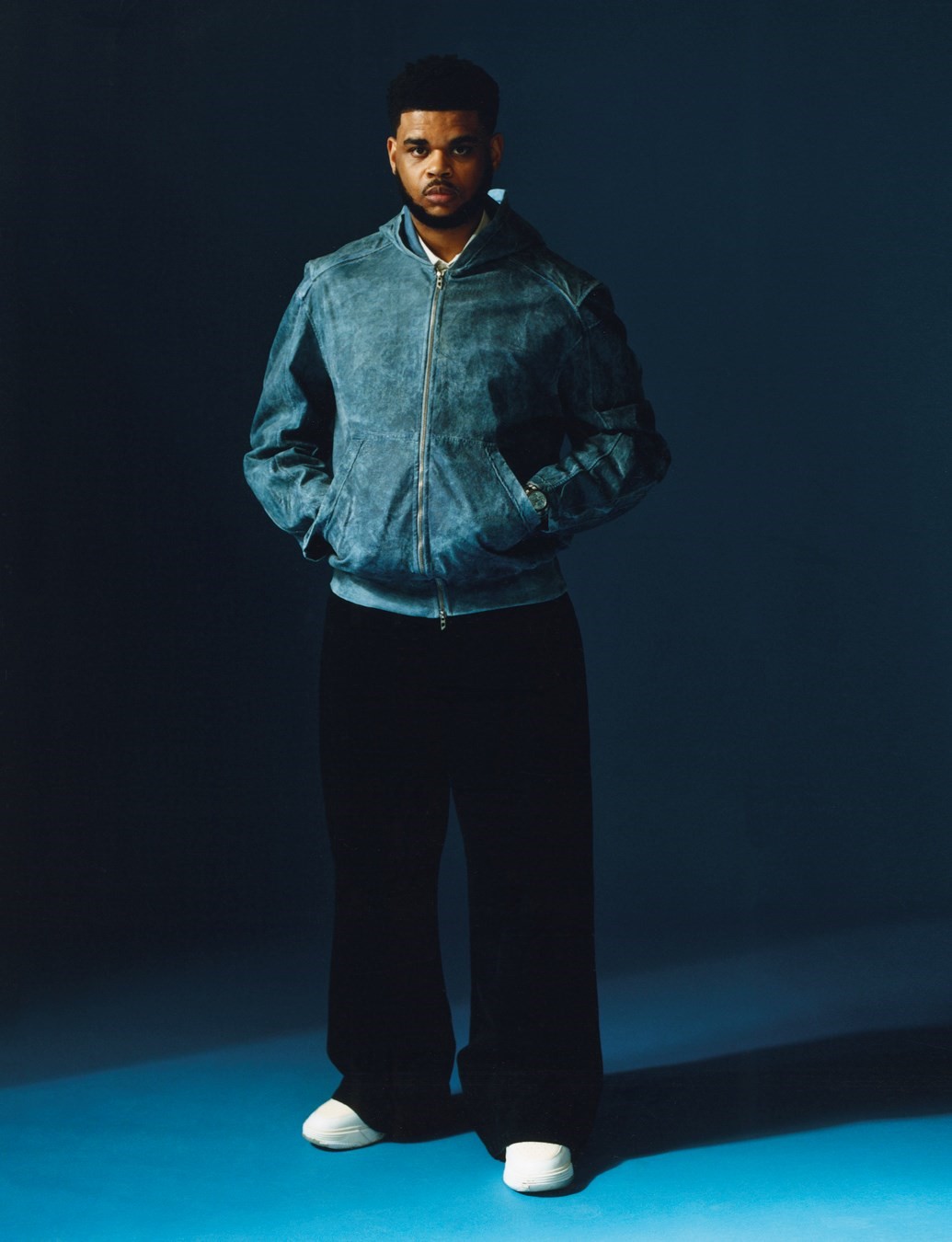
It’s been seven years since K-Trap left south London. The decision wasn’t entirely founded on any desire to escape, though he acknowledges that he “wanted to get away from a certain type of life”, one that he perhaps, as Smile? suggests, he’d outgrown. “I knew that environment, I knew what it comes with, I just knew it too well,” he says. “I was like a shark in a little fish tank. I needed to explore and see life from a different perspective in a different place. In the environment where I grew up, there’s not really much inspiration. Day to day, going for a walk or going to the shop is not really inspiring.”
K-Trap strikes me as someone who is perennially conscious of his influence on others – after all, it’s hard to ignore the trail that you’re blazing. “I’ve got to a stage where I think about my actions and the message that I’m pushing, because I understand that people look to me,” he says. “I feel like that’s why I’m a bit more conscious with my music now.” The birth of his son was also crucial to his shift. Parenthood has its ways of reorienting oneself, like a lighthouse that faithfully guides you out of troubled waters. “At that time I was way younger, so I wasn’t looking at things in the best way. I don’t know where it came from – people used to have this idea where it’s, like, if something was to happen to you or you went to prison or you got killed, as long as you’ve got your child, that’s your stamp. I feel like that’s a crazy way to think about it, because if you’re going to bring a child into this life, you need to be there to look after the child.”
After a sip of sparkling water, he positions himself within this metaphor: You have a teacher at school, and there’s just something about them that makes you want to show up for class. You might not care for learning very much, but just having someone who earnestly cares for you makes you want to be better. “I feel like I’m in that bracket,” he says. “Whatever I put out, people are gonna listen, but I want people to be inspired and do better for themselves.” K-Trap has always positioned music as a force for good, and it’s why he wants his music to be aspirational: despite what you may have heard, you can rap about buying a house in Surrey. “I don’t want to let people think I’m still in a council flat in south-east London. There’s not a lot of people who’ve come from where I’ve come, who’ve done what I’ve done. If we don’t show that growth, then everybody’s just gonna hit that ceiling.”
“I need to be open with who I am. I’m not hiding from anyone” – K-Trap
Born Devonte Perkins Martin, K-Trap grew up on an estate in Gipsy Hill, the neighbourhood bordering Crystal Palace. There, he was protected by a close-knit community where accountability was ever-present. “Nobody used to judge,” he recalls. “You’d look out of the window and see something crazy like the neighbours rowing with each other. Everybody used to deal with stuff within the community. I’d be naughty at the end of the street, and the woman who lives at number 10 who knows my mum might tell me off.” As a kid, he was one of the few in the area with a dinosaur-age PC, and kids would frequently crowd round to lay down tracks on Mixcraft. He describes his younger self as “a bit of a follower”, often diving headfirst into trouble regardless of the consequences, all because others did the same.
This aversion to leadership continued early into his career, the rapper adopting his stage name and donning a balaclava to avoid the baggage of attention that comes with a burgeoning profile. “I knew I was talented, so I wanted to get my music out,” he explains. “But I didn’t really want to take the credit or put a face to the name.” In fact, K-Trap has gone by many misnomers. A rogue self-Google led him to discover that his Wikipedia page named him Patrick. At restaurants, he’d make reservations under different names every time. He was Ian, or Chris, or John. Eventually, his duplicitous identities caught up to him: he wasn’t building professional relationships, he was losing track of which account belonged to what moniker, the fashion houses he was shopping at couldn’t recall his name. “Growing up, things were just a bit backwards,” he concedes. “There are a lot of things that seemed like the right thing to do when I was younger. I might go to a restaurant and not want to [draw attention to myself] because that was something that everyone does in the hood. It feels like everyone’s out to get you.” Maturing with age was the antidote that provided clarity. “Now I’m in the real world, I understand how things are supposed to be. And I’m just catching up and straightening out a lot of things.”
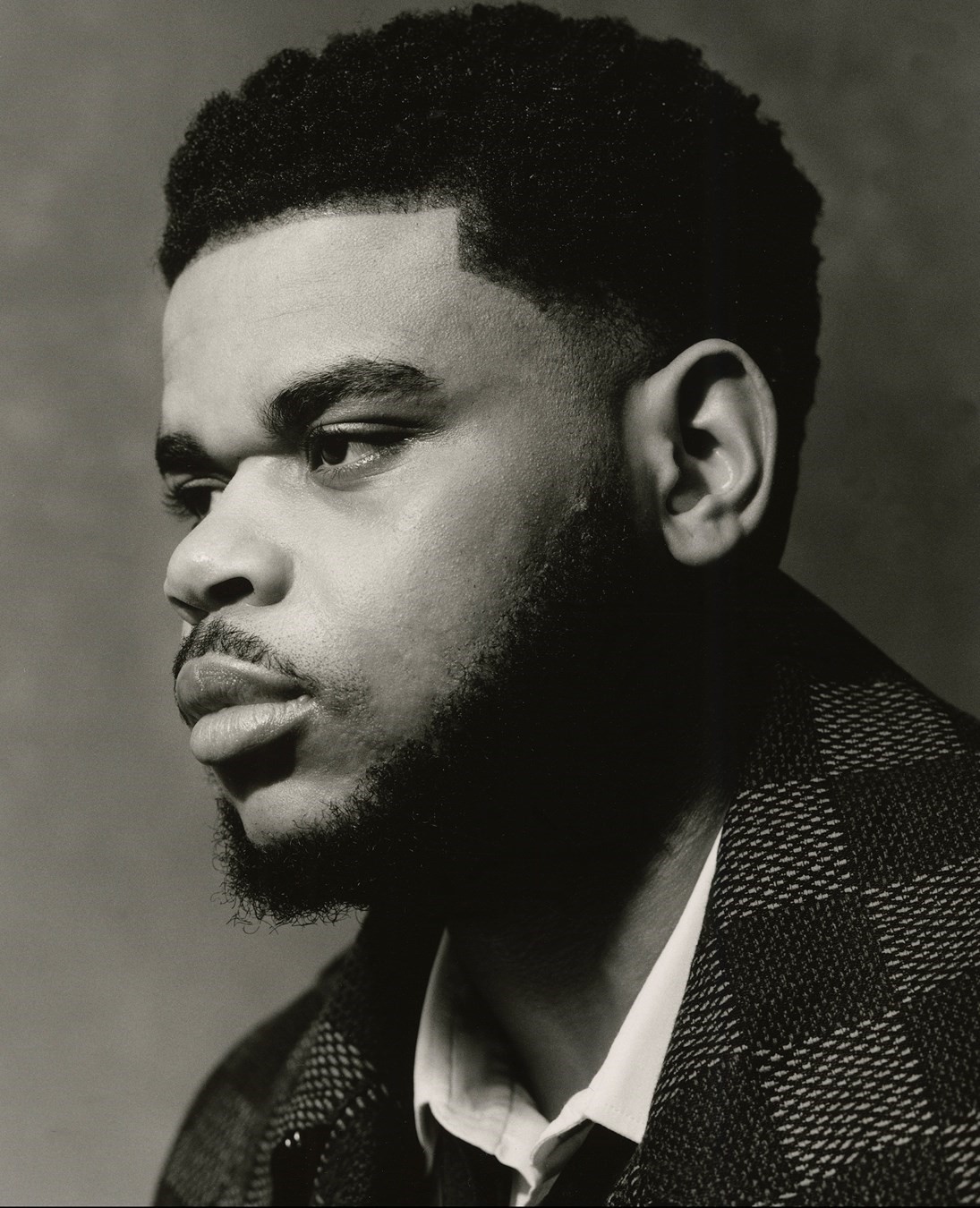
First to go was the balaclava. K-Trap unmasked himself in the music video for “Big Mood”, making himself overwhelmingly visible. On holiday in the Maldives, he met a tennis coach who lit up in recognition and was eager to show the K-Trap tracks in his playlist. His music, it seemed, had travelled as a far as a collection of islands in the middle of the Indian Ocean. Back at home, the instant notoriety fed into paranoia. Walking the streets alone, it felt like every passerby was turning their head twice to look at him. “My instincts were just all over the place,” he says. One day, as he was leaving his house, he decided to not come back. Instead, he temporarily split his time between two places for fear of having his address discovered. Those kinds of fears never fully dissipate, he’s come to realise. You can only learn to coexist with them.
He’s shedding the final piece of K-Trap’s elusive facade now, entirely unafraid of anyone discovering who he really is. “I’m just getting to the stage where I’m shaking off the old me,” he says. “I used to catch myself – I’ve come so far but I’m still acting like this person I was 10 years ago. People used to hide their identities, but I’m an actual, established person. I need to be open with who I am. I’m not hiding from anyone. I’m a musician at the end of the day. I feel like the puzzle needs to add up now; it can’t just be a big mystery. It doesn’t really do anything.”
The real K-Trap is unveiling himself in other ways, too. On the day that we meet, he’s fresh from a fitting for the Louis Vuitton show at Paris Fashion Week, taking out his phone to show me the look: a wool trenchcoat in fluorescent yellow and black stripes, reminiscent of a tiger without dipping into full-blown animal print. Fashion is his latest venture, something he’s wanted to explore since he was young but never had the means to. He would borrow his brother’s clothes from an early age, admiring the patterns, the monograms, the prints. Vuitton was a favourite, as if it was all manifestation in action. “I’m understanding that I like fashion because it’s more than just buying something and wearing it. I want to learn about the brands, about the fits and what they represent. Fashion is another way to express who you are.” Today, K-Trap wears cream sweatpants woven in an intricate cross pattern, and a navy t-shirt, inconspicuous enough if it weren’t for the LV logo visible from the mirror behind his chair. It’s the muted K-Trap everyone thinks they know, just itching to be bolder.
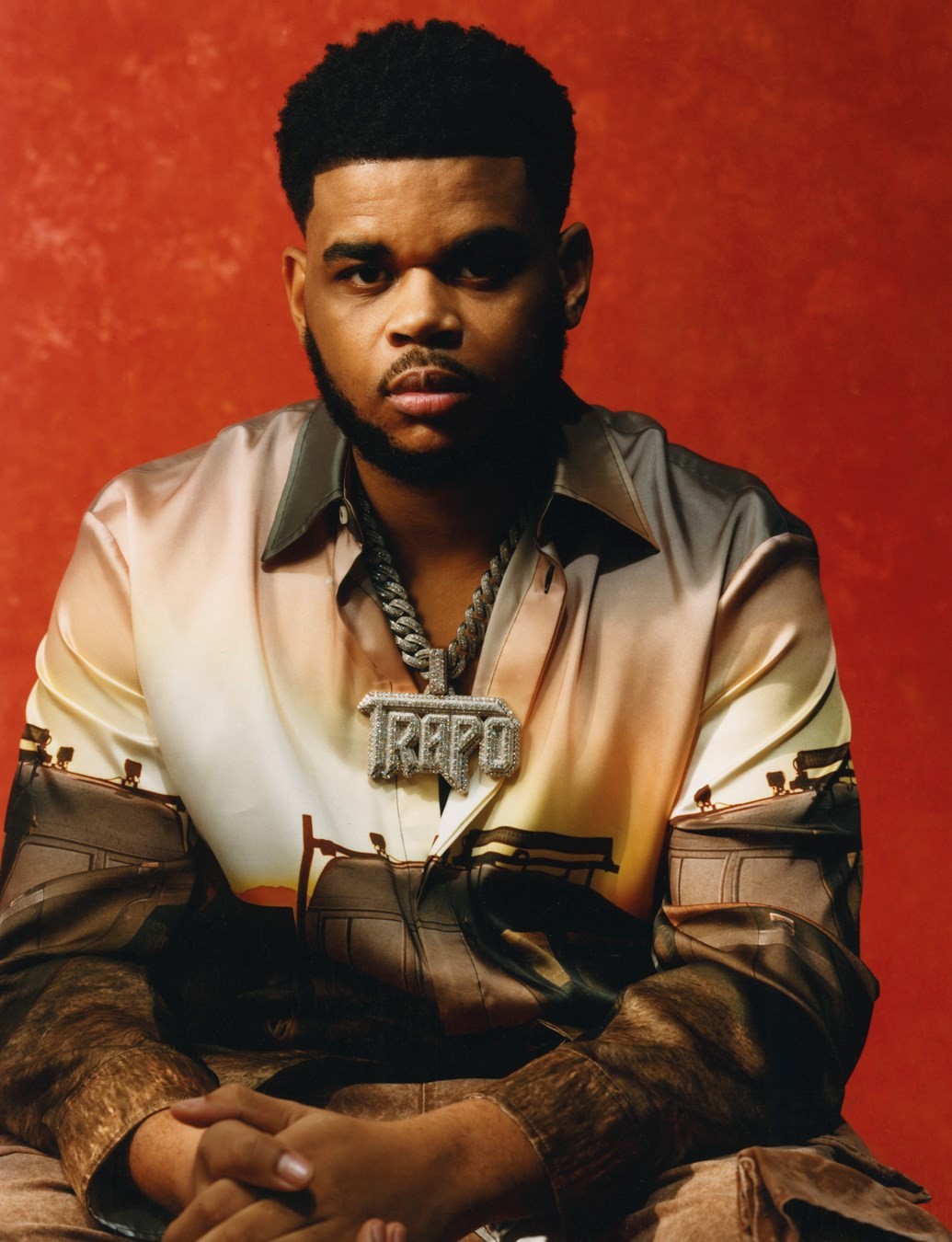
By 2019, K-Trap had signed to Sony imprint Black Butter, a partnership that ultimately disintegrated. The artist brushes off any suggestions of a major fallout, but admits he agreed to the deal “blind”, unaware of what it all entailed. “From the outside, people feel like a big thing happened,” he says, but his experience speaks to the often fraught relationship between commerce and artistry. “When I got signed, [drill] was in the very early stages. They didn’t really know where to go with it. It was a bit upsetting for me because imagine going to a studio, creating the art and working on something, and bringing it to people who don’t understand it. And they can’t fake it. It made me feel like the ideas weren’t good, but they were good. They just didn’t understand. I was kind of tip-toeing around because I’m a person who wanted to please these people. It got to the point where I was pleasing them too much but not pleasing myself.”
When K-Trap released his debut studio album, Street Side Effects, on Black Butter in 2020, he became intimately aware that his fans “weren’t gravitating” to his new music. Ultimately, he felt he had succumbed to his eagerness to impress, and when the offer was made by his label to stay or leave, he chose the latter. Now on his own independent imprint, K-Trap is growing on his own terms. His fans, he says, are his “priority”, but he’s also learning to make music for himself: “I’m trying to give people the best version of me and give people exactly where I’m at in this moment. A lot of people want the old stuff, but it’s just not where I’m at.”
When drill broke out in the UK from its origins in the Chicago rap scene, K-Trap was quickly crowned as its torchbearer. Debates continue in the depths of Reddit over who the real ‘King of Drill’ is, which K-Trap laughs off – he doesn’t want the title. “I don’t want to be just a category,” he says. “I don’t want to completely forget about drill, but I know I’m bigger than it. Drill played a massive part at the beginning of my journey. But the stage I’m at now, I just want to be open. I want people to understand that I’m an artist trying new sounds and branching out.”
“I don’t want to do fairytales or paint a picture that’s not really going on in the real world... I can never forget where I’ve come from but I also know that I’m bigger than my old life” – K-Trap
Having been named a pioneer, K-Trap is particularly thoughtful about drill, even as his music has diversified. Being asked about the state of the nation must be tiring, I imagine, but he has no reservations in talking about it, perhaps because it’s so difficult to extricate yourself from where you began. “Drill as a genre, it’s make-or-break, you can definitely change your life. You can go left or right. I want to be one of the drill artists that use it as a stepping stone. You can go through this door instead of that one, because sometimes it has a negative outlook.”
If drill is a stepping stone, does he think that it’s limiting? “Only the strong survive,” he answers. “You have to be a bit more creative with your music. If you’re just gonna start doing drill how everybody else does drill and not elevate it, then it is limiting.” The real K-Trap is an artist who is constantly evolving, whether his listeners are on board or not. He’s left south London behind; he’s a father on the city’s outskirts. In person, he’s candid and softly spoken, but still careful to protect himself. He considers his words deeply, his sentences often punctuated with a hesitant, “How do I say this?” But he also plays padel on the side, and Fifa when he has a moment to himself. He remains modest about his skills in cooking seafood. And sometimes, even the infamously unreadable K-Trap can’t resist raising the corners of his mouth in a smirk. Throughout, he’s battled being misunderstood. His intentions have been misread; his voice has been devalued by the wrong people; his Wikipedia page credited his success to the wrong name. But Devonte Perkins Martin remains confident that the work will pay off.
“The one thing I’ll say about K-Trap is that when it does get to that moment, I [will] receive my flowers,” he says, the ghost of a smile still playing on his lips. “It just takes a bit longer, but as long as it happens, then that’s the main thing. And it’s always me saying I told you so.”
Grooming NAT BURY at LEFTSIDE CREATIVE, set design SRACE SNELLOCK, photographic assistants SAM COURT, HICHAM GARDAF, styling assistants TODD JENSON, LIZZIE ASH, ELOISE JENNER, grooming assistant H'TRAE BECKFORD, set design assistant ETHAN PRICE
